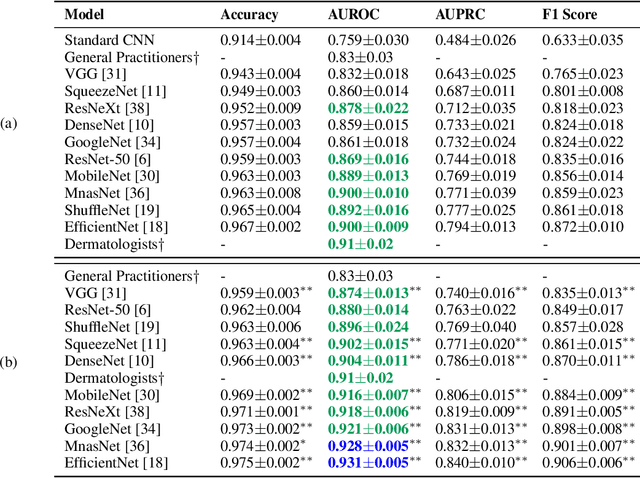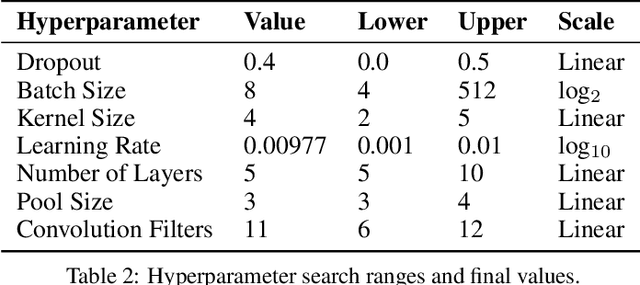Deep Transfer Learning for Automated Diagnosis of Skin Lesions from Photographs
Paper and Code
Nov 06, 2020



Melanoma is the most common form of skin cancer worldwide. Currently, the disease is diagnosed by expert dermatologists, which is costly and requires timely access to medical treatment. Recent advances in deep learning have the potential to improve diagnostic performance, expedite urgent referrals and reduce burden on clinicians. Through smart phones, the technology could reach people who would not normally have access to such healthcare services, e.g. in remote parts of the world, due to financial constraints or in 2020, COVID-19 cancellations. To this end, we have investigated various transfer learning approaches by leveraging model parameters pre-trained on ImageNet with finetuning on melanoma detection. We compare EfficientNet, MnasNet, MobileNet, DenseNet, SqueezeNet, ShuffleNet, GoogleNet, ResNet, ResNeXt, VGG and a simple CNN with and without transfer learning. We find the mobile network, EfficientNet (with transfer learning) achieves the best mean performance with an area under the receiver operating characteristic curve (AUROC) of 0.931$\pm$0.005 and an area under the precision recall curve (AUPRC) of 0.840$\pm$0.010. This is significantly better than general practitioners (0.83$\pm$0.03 AUROC) and dermatologists (0.91$\pm$0.02 AUROC).
 Add to Chrome
Add to Chrome Add to Firefox
Add to Firefox Add to Edge
Add to Edge